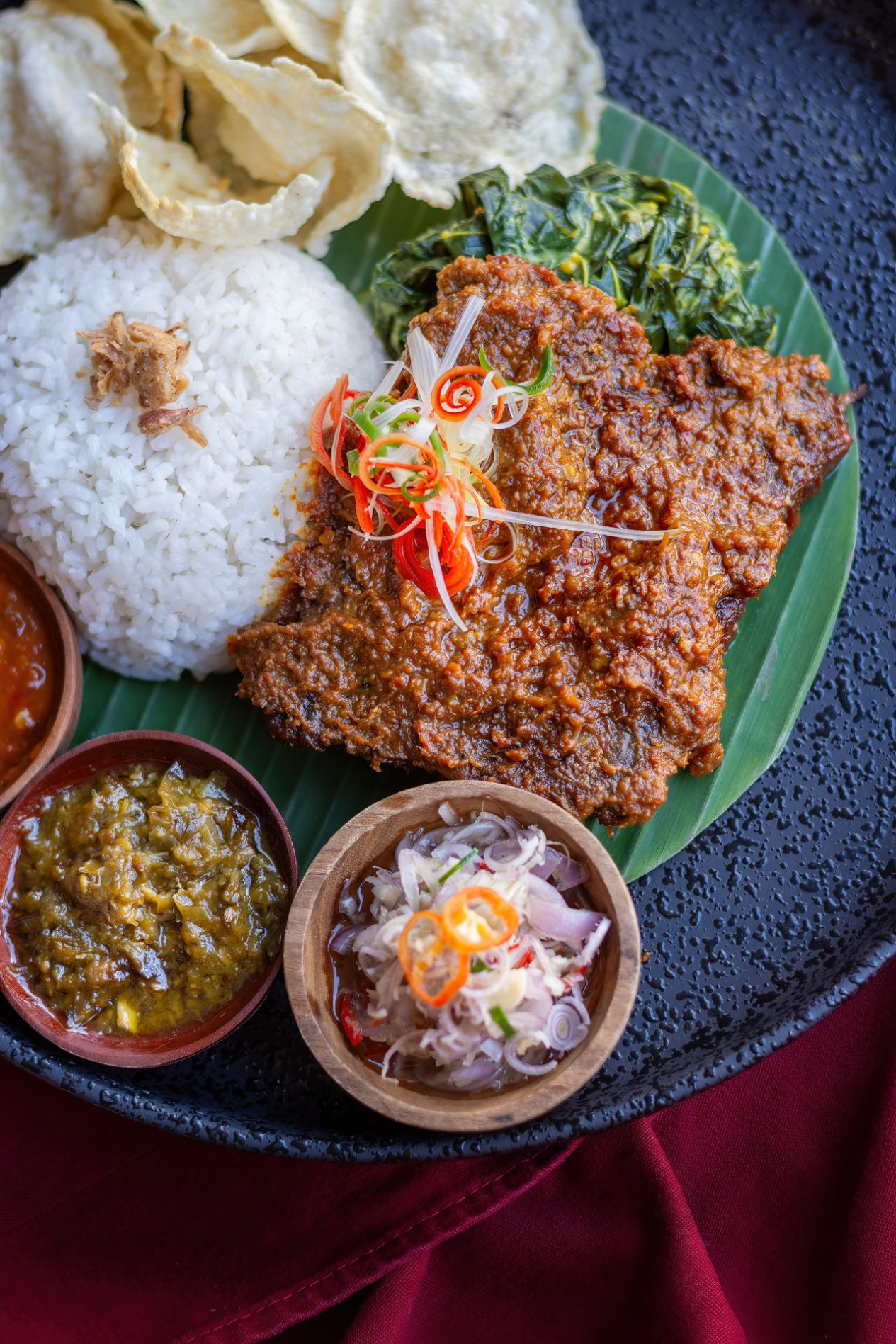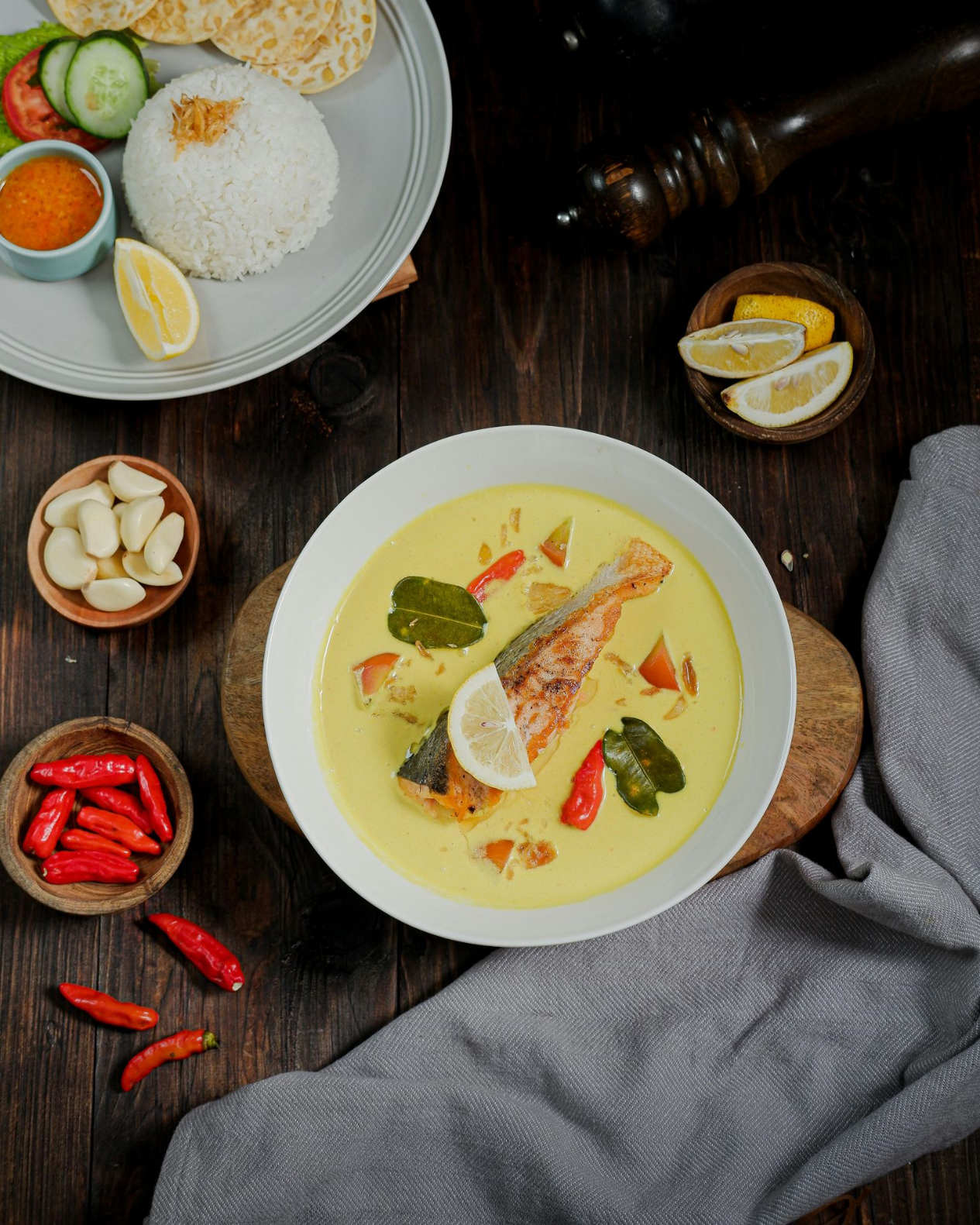In Bali’s lush rice terraces at dawn, chef Andrew Fahludza stands in the center of a mandala-shaped organic garden. He is head chef at Begawan Biji, a new farm-to-table restaurant in Ubud (opened August 2024) where guests dine among rice paddies. He captures a new ethos: food grown in the ground becomes food on the plate, and dining is immersive. This blend of agriculture, design, and hospitality at Begawan Biji, rooted in Bali’s community irrigation culture, exemplifies a broader trend: travelers are now seeking journeys that feed the soul as much as the appetite.
Across Indonesia, tour platforms and guides are packed with experiences that link plates to place. In Ubud, one can join a traditional cooking class that starts with a dawn visit to the local market, then harvests herbs from a family garden to make rendang over woodfirebyfood.com. In East Java, visitors pick fresh coffee, and roast it traditionally, then learn batik by hand in a nearby. These are not generic tourist meals but carefully crafted cultural exchanges the kind of food-focused journeys that modern travelers crave. As one culinary agency notes, clients explore markets, village farms, and cooking methods as part of their Bali or Java itineraries. In a word, the new Indonesian travel scene puts authenticity on the menu.

This culinary movement is often led by locally rooted spots that double as community hubs. A great example is Bali’s Warung Local in Denpasar: an open-air buffet counter serving more than 40 daily home-cooked dishes (from sambal goreng to vegetable curry) where diners build their own plates. From its 2019 opening, Warung Local wove sustainability into every detail: plastic bottles are banned and paper straws used, guests get discounts for bringing their own containers, and kitchen leftovers are carefully portioned or repurposed as pig. Such places demonstrate how tourism and ethics can coexist, Bali’s flavors meet responsible operations.
Begawan Biji (Bali): An Ubud restaurant opened in 2024 with an on-site organic farm. Head Chef Andrew Fahludza sources all ingredients, from rice to eggs, to serve dishes that are 100 percent produced locally.
Warung Local (Bali): A family-run buffet eatery prioritizing Balinese cuisine and zero waste. It grows much of its produce nearby, eliminates single-use plastics, and even turns food scraps into fertilizer or animal feed.
Asli Food Project: A nationwide initiative by American chef Crystal Chiu to document and share Indonesia’s indigenous recipes and foodways. By traveling from Sumatra to Papua, she highlights how one ingredient (like the kluwak nut) can be prepared in totally different ways across islands. Chiu reminds us that tourists often only know nasi goreng or satay, and urges them to “dig deeper” to find the hundreds of lesser-known local dishes.
East Java & Co (Java/Sulawesi): A farming cooperative that works with smallholder growers (coffee, tea, spices, etc.) across Java and Sulawesi. Its mission statement praises “environmentally sustainable farming” and direct sourcing from enthusiastic local farmers. By promoting organic techniques and traditional recipes, it strengthens food heritage from Java’s tea hills to Sulawesi’s spice forests.
These projects span from Bali’s rice fields to remote villages, but all share a community spirit. Tourists who once might have snapped photos of Balinese dancers now volunteer at farms or learn to grind spices by hand. Across Yogyakarta or Makassar, new cooking schools and homestays invite visitors into family kitchens. The goal is simple: every meal is an exchange.

In North Sulawesi, for example, culinary heritage brims with heat and aroma. Manadonese tables feature barbecued fish with dabu-dabu relish (fresh chilies, calamansi, shallots) and fiery soups like rica-rica, reflecting the island’s spice-trade legacynationalgeographic.com. These dishes feel worlds apart from Java’s rice-and-beans routine. Chef Crystal Chiu observed that even a single nut, the pungent kluwak, is used differently by Torajans versus Javanese : some roast it dry for intense flavor, others ferment it underground. Such regional ingenuity is what foodie travelers now seek. In remote Sulawesi villages, visitors can learn to prepare bubur Manado (rich corn-and-pumpkin porridge) or watch fishermen cook morning catch over banana leaves. The menus, featuring cassava, coconut, wild spices, tell stories of trade winds and tribal villages as vividly as any history book.
Meanwhile, in Java’s Kedu highlands and the cultural capital of Yogya, new eco-tourism villages highlight food heritage. Tourists can also visit a batik workshop or a millet-growing project. On Bali’s eastern shores, travelers once drawn only to the beach temple now take “subak tours” to learn Bali’s communal water temples and end with a farm lunch. In all these places, the line between sightseeing and sustenance blurs. A sustainable approach seasonal ingredients, plastic-free meals, support for local farmers is often woven into the experience. As one of Bali’s design-conscious cafes, Bokashi, puts it: their very name is an homage to composting waste, and most ingredients come from trusted local suppliers to minimize carbon footprint.
On a national scale, Indonesia’s government is also championing its flavors. Late 2024 saw the “Indonesia Spice Up The World” campaign launch in London, complete with authentic rendang and nasi goreng demo events for foreign visitors. This kind of promotion shows official recognition that food tourism is a strategic asset, it fits with Indonesia’s sustainability goals and boosts small businesses. At home, local festivals and food expos increasingly highlight heirloom grains, rare fruits, and traditional recipes. In remote corners of the archipelago, even eco-lodges are sprouting up that teach guests about durian orchards or sago harvesting. Together, chefs, farmers and travelers are composing a new culinary narrative: one that honors heritage but looks ahead to how food can connect communities and protect the earth.
Ultimately, the return home from such a journey is more than a souvenir tote of spices. It’s a memory of place, the sight of colorful curries on carved wooden tables, the scent of lemongrass drifting through a mountain village, the taste of a dish made by hands in an open kitchen. For the design-minded traveler, Indonesia now offers a feast for all senses: beautifully set tables under green canopies, craft pottery holding sambals made from garden chilies, and stories behind each ingredient. This is the rising movement at food and travel’s crossroads: an Indonesia where every meal is a design of meaning. The archipelago’s next wave of tourism will not only capture Instagram frames, but also cultivate respect, for local flavors, local people, and the landscapes that provide them.